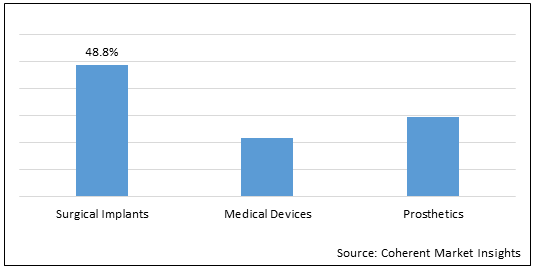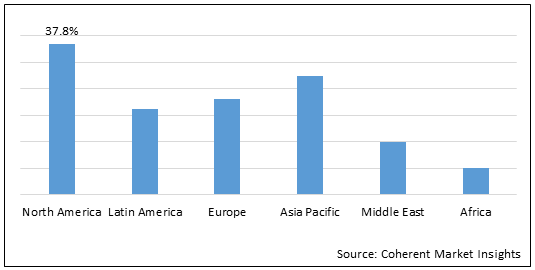Ceramic materials are the combination of thermal and physical qualities which are used for various medical applications for the repair and reconstruction of human body parts. These are employed majorly in dental and orthopedic applications, mainly as implants or replacements. The inherent brittleness of traditional ceramics has limited their ability to compete with ductile metals and polymers for technical applications like oil-free bearings in food processing equipment, aerospace turbine blades, nuclear fuel rods, lightweight armour, cutting tools. However, over the last 100 years innovative techniques in the fabrication of ceramics have led to their use as high-tech materials. Inert bioceramic, such as ZrO2 and Al2O3, have inherently low levels of reactivity compared to other materials such as polymers and metals as well as surface reactive or bio-inert ceramics and they are expected to be non-toxic, non-allergenic, and non-carcinogenic for a life-time in a human body. This led to the early adoption of the most recent generation of instruments using an established technology in the hospitals.
Global medical ceramics market is estimated to be valued at US$ 4,795.13 million in 2022 and is expected to exhibit a CAGR of 6.1% during the forecast period (2022-2030).
Figure 1. Global Medical Ceramics Market Share (%), by Application, 2022

To learn more about this report, Download Free Sample
Rise in surgical procedures related to orthopedic and dental implants is expected to augment market growth.
Rising number of medical procedures involving dental implants, orthopedic implants, and others is one of the major factors driving growth of this market. For instance, in December 2021, according to data published by National Center for Biotechnology Information, knee is the most commonly injured joint by adolescent athletes with an estimated 754,000 procedures of Knee Arthroplasty (Replacement) surgeries carried out in 2021 all over the world. Moreover, in July 2021 according to European Commission 450,000 procedures for Hip Arthroplasty (Replacement) were carried out in 2019 globally. Due to their excellent frictional properties on the order of 0.5 to 1.0, technical ceramics are gaining popularity in endo-prosthetics. Increasing trauma cases due to falls and road accidents, requires medical intervention (orthopedics), thus, augmenting the need for medical ceramics products like dental screws and bridges, Valves, Femoral head implants for hip replacement.
Medical Ceramics Market Report Coverage
| Report Coverage | Details | ||
|---|---|---|---|
| Base Year: | 2021 | Market Size in 2022: | US$ 4,795.13 Mn |
| Historical Data for: | 2017 to 2020 | Forecast Period: | 2022 to 2030 |
| Forecast Period 2022 to 2030 CAGR: | 6.1% | 2030 Value Projection: | US$ 7,690.12 Mn |
| Geographies covered: |
|
||
| Segments covered: |
|
||
| Companies covered: |
CoorsTek Medical, H.C. Starck GmbH, Tosoh Corporation, Noritake Co., Ltd., 3M ESPE, Morgan Advanced Materials plc, Ceramtec, Pl Ceramic GmbH, Lithoz, Kyocera Corporation |
||
| Growth Drivers: |
|
||
| Restraints & Challenges: |
|
||
Uncover macros and micros vetted on 75+ parameters: Get instant access to report
Figure 2.Global Medical Ceramics Market Share (%), by Region, 2022

To learn more about this report, Download Free Sample
Development of novel product varieties with higher mechanical strengths and flexibility is expected to drive market growth during the forecast period.
Development of novel products varieties with higher mechanical strengths and flexibility is expected to drive the global medical ceramics market. For instance, on June 14, 2022, CeramTec GmbH, a company that manufactures and develops advanced ceramic components, Germany-based Company, received U.S. Food & Drug Administration (FDA) approval for designing Ceram Tec’s novel ceramic total knee replacement device.
Global Medical Ceramics Market– Impact of Coronavirus (COVID-19) Pandemic
Since the COVID-19 virus outbreak in December 2019, the disease has spread to over 100 countries across the globe and the World Health Organization had declared it a public health emergency on January 30, 2020.
COVID-19 has affect the economy in three main ways: by directly affecting production and demand of medical ceramics, by creating disruptions in distribution channels of medical ceramics, and. Due to nationwide lockdowns, several countries, such as China, India, Saudi Arabia, U.A.E., Egypt, and others, faced problems with regard to transportation of medical ceramics from one place to another.
However, the COVID-19 pandemic had a negative impact on the global medical ceramics market, owing to less number of surgeries carried out related to orthopedic and dental implantation. For instance, in November 2021, according to data published by PubMed, hospitals experienced rapid overcrowding by COVID-19 patients, several orthopedic surgeons were called upon to care for the Covid-19 patients. Coinciding with this significant shift in clinical role were the cancellations of elective surgery cases as well as the postponement of interventional orthopedic procedures and surgeries. Reasons for such cancellations are two-fold: to decrease patient and provider exposure to COVID-19, and conserving personal protective equipment and other valuable resources.
Global Medical Ceramics Market: Key Developments
In November 2021, according to data published by the Journal of the American Ceramic Society, advanced ceramic materials, with their wear-resistance and biocompatibility, are preferably suited for an array of implantable medical devices. From drug delivery devices and stimulators to implantable electronic sensors and more, they have a wide range of applications. Zirconia, alumina, and other advanced ceramics products have established their efficacy to stand up to the critical human body environment. According to the estimation of the Ceramics Society, the worldwide ceramics market is expected to witness a rise up to $287 billion by the year 2022. Monolithic ceramics is one of the majorly used advanced ceramics types that contribute to approximately 79 percent of the total share of medical ceramics. The main application areas of medical ceramics include bio-ceramics, electricals & electronics, and defense.
Global Medical Ceramics Market: Restraint
The major factors that hinder growth of the global medical ceramics market include radioelements found in ceramics showing devastating effects on organs and tissues like organ failure, tissue tearing, Bursitis, Sprains in tissue. Although medical ceramics are known to be nontoxic, there have been cases where very small traces of radioelements were found even in the ceramics that were fully refined and had devastating effects on organs and tissues.
Key Players
Major players operating in the global medical ceramics market include CoorsTek Medical, H.C. Starck GmbH, Tosoh Corporation, Noritake Co., Ltd., 3M ESPE, Morgan Advanced Materials plc, Ceramtec, Pl Ceramic GmbH, Lithoz, and Kyocera Corporation.
Share
Share
Missing comfort of reading report in your local language? Find your preferred language :
Transform your Strategy with Exclusive Trending Reports :
Frequently Asked Questions
Select a License Type
Joining thousands of companies around the world committed to making the Excellent Business Solutions.
View All Our Clients